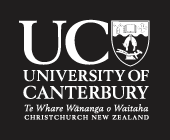Prof Tim David
Applications accepted all year round
Competition Funded PhD Project (Students Worldwide)
About the Project
Local blood flow to the brain is controlled by neuronal activity and special cells called astrocytes. The link between neurons firing and blood flow to the neighbouring brain tissue (termed neurovascular coupling) has become a vibrant area of experimental research over the past five years.
This proposed project will use i) MRI data from our collaborators in New Zealand, ii) validated complex numerical models and iii) state-of-the-art massively parallel heterogeneous computing techniques to investigate the critical cellular chemistry of neurovascular coupling.
There is now evidence that neurological diseases such as Alzheimer’s are fundamentally linked to local blood perfusion of the cerebral tissue. Understanding the relationship between neurovascular coupling and neurological disorders is crucial to providing clinical knowledge and support.
The successful PhD applicant will use distinctive experimental data and our unique numerical blood flow models to investigate the role of neurovascular coupling utilising metabolically driven “astrocyte” pathways providing local perfusion of brain tissue.
The Brain Research Group (BRG) at the University of Canterbury, led by the Professor David, has developed models of both blood flow in the major cerebrovasculature and complex myogenic/metabolic autoregulation using large tree structures simulating the vascular bed. The tree structures contain millions (up to 10,000,000) segments, with each segment responding to the solution of a set of ordinary differential equations modelling the chemical pathways and subsequent contraction/dilation of arterioles. The auto-regulated cerebral tree model is unique to the BRG and is recognised as both cutting edge and world class.
Funding Notes
Only funded via successful application to University of Canterbury Doctoral Scholarship.

 Continue with Facebook
Continue with Facebook

